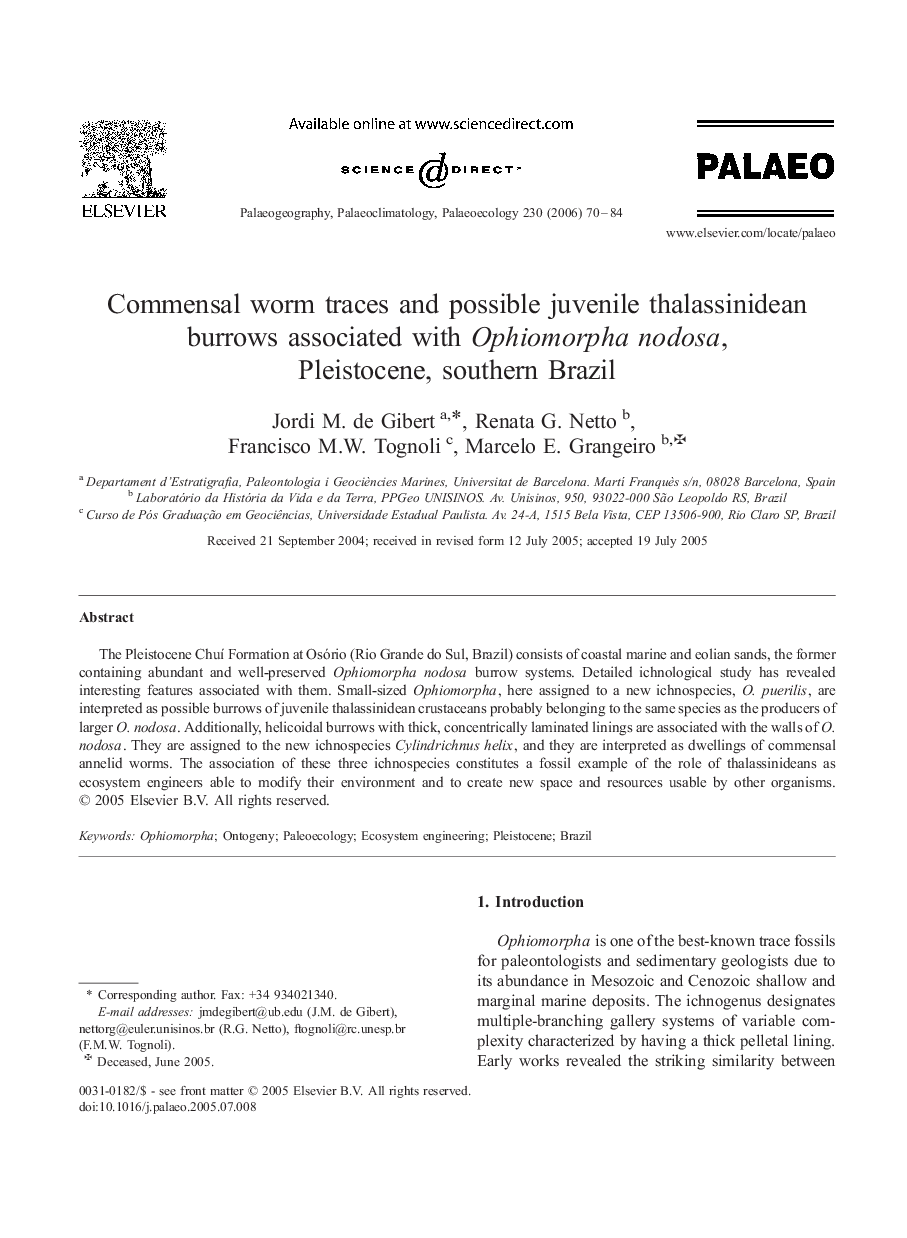| Article ID | Journal | Published Year | Pages | File Type |
|---|---|---|---|---|
| 4469619 | Palaeogeography, Palaeoclimatology, Palaeoecology | 2006 | 15 Pages |
The Pleistocene Chuí Formation at Osório (Rio Grande do Sul, Brazil) consists of coastal marine and eolian sands, the former containing abundant and well-preserved Ophiomorpha nodosa burrow systems. Detailed ichnological study has revealed interesting features associated with them. Small-sized Ophiomorpha, here assigned to a new ichnospecies, O. puerilis, are interpreted as possible burrows of juvenile thalassinidean crustaceans probably belonging to the same species as the producers of larger O. nodosa. Additionally, helicoidal burrows with thick, concentrically laminated linings are associated with the walls of O. nodosa. They are assigned to the new ichnospecies Cylindrichnus helix, and they are interpreted as dwellings of commensal annelid worms. The association of these three ichnospecies constitutes a fossil example of the role of thalassinideans as ecosystem engineers able to modify their environment and to create new space and resources usable by other organisms.
